SEO Best Practices for Modern Website Design (2025)
INTRODUCTION
Did you know that 68% of online experiences begin with a search engine? Yet many beautifully designed websites fail to rank well because they neglect crucial SEO principles. In this comprehensive guide, we’ll explore how to bridge the gap between stunning design and search engine optimization. Whether you’re a seasoned web designer or just starting out, these proven SEO best practices will help your websites not only look great but also perform exceptionally well in search results. SEO best practices for modern website design in 2025.
Foundations of SEO-Friendly Website Architecture
You know what keeps me up at night sometimes? Thinking about the website I built for a client back in 2022 that had the most confusing site structure ever. It was like one of those maze games where you can’t find the exit! The search engines were just as lost as the users, and boy, did we pay for that mistake in rankings.
Here’s the thing about website architecture – it’s kind of like planning a city. You wouldn’t build a city without planning the main streets, neighborhoods, and how people will get around, right? The same goes for your website. I’ve found that the most successful approach is starting with your main categories (think of them as your downtown areas) and then branching out into subcategories (your neighborhoods).
Let me share a quick win that transformed how I approach URL structures. Instead of using those crazy long URLs with random numbers and symbols, I started using clean, keyword-rich URLs that actually make sense to humans. For example, instead of example.com/p=123?id=456, I now use something like example.com/seo-tips/website-structure. Such a simple change, but it makes a huge difference! SEO best practices for modern website design in 2025
One thing that’s totally saved my bacon more times than I can count is implementing breadcrumb navigation. Think of breadcrumbs as those little trail markers that help hikers find their way back – except in this case, they’re helping both users and search engines understand exactly where they are on your site. Plus, they look pretty slick when they show up in search results!
The real game-changer, though, has been mastering internal linking. I used to just randomly throw links around my sites wherever they seemed to fit. Now I approach it like I’m building a web of information, carefully connecting related pages to distribute that sweet, sweet link juice (that’s SEO speak for page authority) throughout the site.
Technical SEO Essentials for Modern Websites

Okay, real talk – when mobile-first indexing became a thing, I was not ready. At all. I had this beautiful website for a restaurant client that looked amazing on desktop but was basically unusable on phones. The day I discovered our mobile traffic had tanked was… well, let’s just say I needed more than one coffee to get through that client meeting! SEO best practices for modern website design in 2025
These days, I start every project by thinking mobile-first, and it’s completely changed my approach to design. You’ve got to nail those Core Web Vitals – they’re like your website’s report card from Google. I learned this neat trick where I use WebP images instead of regular JPEGs or PNGs, and it’s cut my image sizes by like 30% without losing quality. Game changer!
One of my favorite debugging tools is the elementor simulator. I probably spend half my day in there, tweaking and optimizing until everything’s just right. And don’t even get me started on semantic HTML – I used to think it was just extra work, but now I’m like a semantic markup evangelist! There’s something so satisfying about using the right tags for the right content. SEO best practices for modern website design in 2025
Content Organization and On-Page SEO Elements
Let me tell you about my biggest SEO face-palm moment. Early in my career, I built this website where every single page had an H1 that said “Welcome to Our Website.” I know, I know – rookie mistake! But hey, we all start somewhere, right? That experience taught me just how crucial proper heading hierarchy is for both SEO and user experience.
These days, I treat my heading structure like I’m outlining a really well-organized book. Your H1 is like your book title – you only need one, and it should be awesome. Then your H2s are like your chapters, and H3s are your subsections. I actually keep a little Post-it note on my monitor that says “One H1, friend!” just to remind myself not to go overboard.
Speaking of going overboard, let’s talk about keyword placement. Remember those days when people would stuff keywords everywhere until their content read like a robot wrote it? Yikes! I’ve found that the sweet spot is using your target keyword in the first 100 words, but only if it feels natural. My rule of thumb? Read it out loud – if you sound like a malfunctioning Android, you’re doing it wrong!
One thing that really leveled up my SEO game was learning about content clustering. Think of it like organizing your closet (stay with me here!). Instead of having all your clothes in one big pile, you group similar items together. That’s what I do with content now – creating detailed hub pages with related content clustered around them. When I first tried this with a client’s photography website, their organic traffic jumped by 43% in three months! SEO best practices for modern website design in 2025
Meta tags used to be my nemesis – I either stuffed them with keywords or made them so boring nobody would click. Now I write them like they’re tiny advertisements, focusing on value propositions and emotional triggers. And here’s a pro tip: I keep a swipe file of meta descriptions that got great click-through rates, so I can reference what works when I’m feeling stuck. SEO best practices for modern website design in 2025
User Experience Factors That Impact SEO
Want to hear something that keeps me humble? I once designed a website that looked absolutely stunning but had a bounce rate higher than a kangaroo on a trampoline! That taught me a valuable lesson about balancing aesthetics with usability. Now I obsess over user metrics like bounce rate and time on site because they’re like your website’s vital signs.
Navigation is another thing I used to overcomplicate. I’d create these super fancy mega-menus with animations and hover effects that looked cool but confused the heck out of users (and search engines). These days, I stick to the KISS principle – Keep It Simple, Silly! My favorite trick is to ask my mom to find something on the site. If she can’t figure it out in 30 seconds, back to the drawing board I go!
You know what’s funny? I used to think calls-to-action had to be these big, flashy buttons screaming “BUY NOW!” or “CLICK HERE!” at visitors. Talk about aggressive! Now I focus on creating CTAs that feel like natural next steps in the user’s journey. It’s like being a good host at a party – you guide people to where they want to go without pushing them. SEO best practices for modern website design in 2025
Accessibility is something I wish I’d taken seriously from day one. I used to think it was just about adding alt text to images (which, by the way, I was terrible at – “image1.jpg” is not helpful alt text, past me!). But it’s so much more than that. Making your site accessible isn’t just good for SEO – it’s good karma. Plus, many accessibility best practices actually improve your site’s usability for everyone!

Performance Optimization for SEO
Let’s talk about page speed – my former archnemesis! I used to build these gorgeous, image-heavy websites that took forever to load. We’re talking “go make a sandwich while you wait” kind of loading times. That was before I learned about modern image optimization techniques and the magic of lazy loading. SEO best practices for modern website design in 2025
Here’s a confession: I once crashed a client’s server during a product launch because I didn’t implement proper caching. Talk about a learning experience! Now I’m almost obsessive about caching strategies. I’ve got this whole checklist of performance optimizations that I run through: minifying CSS and JavaScript, optimizing images, leveraging browser caching – the works!
The coolest thing I’ve discovered recently is the impact of CDNs on global performance. I had this client in Australia whose US visitors were experiencing terrible load times. Implementing a CDN was like installing a hyperdrive – suddenly their site was lightning fast everywhere! Now I won’t launch a site without one.
Here’s my favorite performance testing routine: I test on my old Android phone using 3G speeds. If it loads well there, it’ll load well pretty much anywhere. Sure, it might be a bit extreme, but it’s helped me catch performance issues before they become real problems. And let me tell you, there’s nothing more satisfying than seeing those Core Web Vitals all turn green! SEO best practices for modern website design in 2025
CONCLUSION
Creating a website that balances beautiful design with strong SEO doesn’t have to be a compromise. By implementing these best practices, you can develop websites that not only captivate visitors but also rank well in search results. Remember, SEO isn’t just about technical optimizations – it’s about creating a better, more accessible web experience for everyone. Start implementing these practices today, and watch your websites climb the search rankings while maintaining their visual appeal. SEO best practices for modern website design in 2025
website architecture seo
responsive design optimization
mobile-first indexing
core web vitals
semantic html structure SEO best practices for modern website design in 2025
site speed optimization
user experience metrics
crawl budget optimization
internal linking strategy
breadcrumb navigation
schema markup implementation SEO best practices for modern website design in 2025
javascript seo
content hierarchy
website navigation structure SEO best practices for modern website design in 2025
canonical tag implementation
xml sitemap optimization
meta tag best practices
page load optimization
mobile responsiveness
site architecture planning
url structure optimization SEO best practices for modern website design in 2025
header tag hierarchy
content organization
web accessibility seo
technical seo checklist
performance optimization SEO best practices for modern website design in 2025
browser caching
cdn implementation
robots.txt configuration
site search optimization SEO best practices for modern website design in 2025
structured data markup
progressive enhancement
lazy loading images
css optimization
above the fold content
site speed metrics SEO best practices for modern website design in 2025
mobile usability
page experience signals
accessibility guidelines
responsive images
semantic markup
user engagement metrics
search engine crawling SEO best practices for modern website design in 2025
permalink structure
information architecture
website hierarchy
content silos
navigation optimization
seo friendly design SEO best practices for modern website design in 2025






